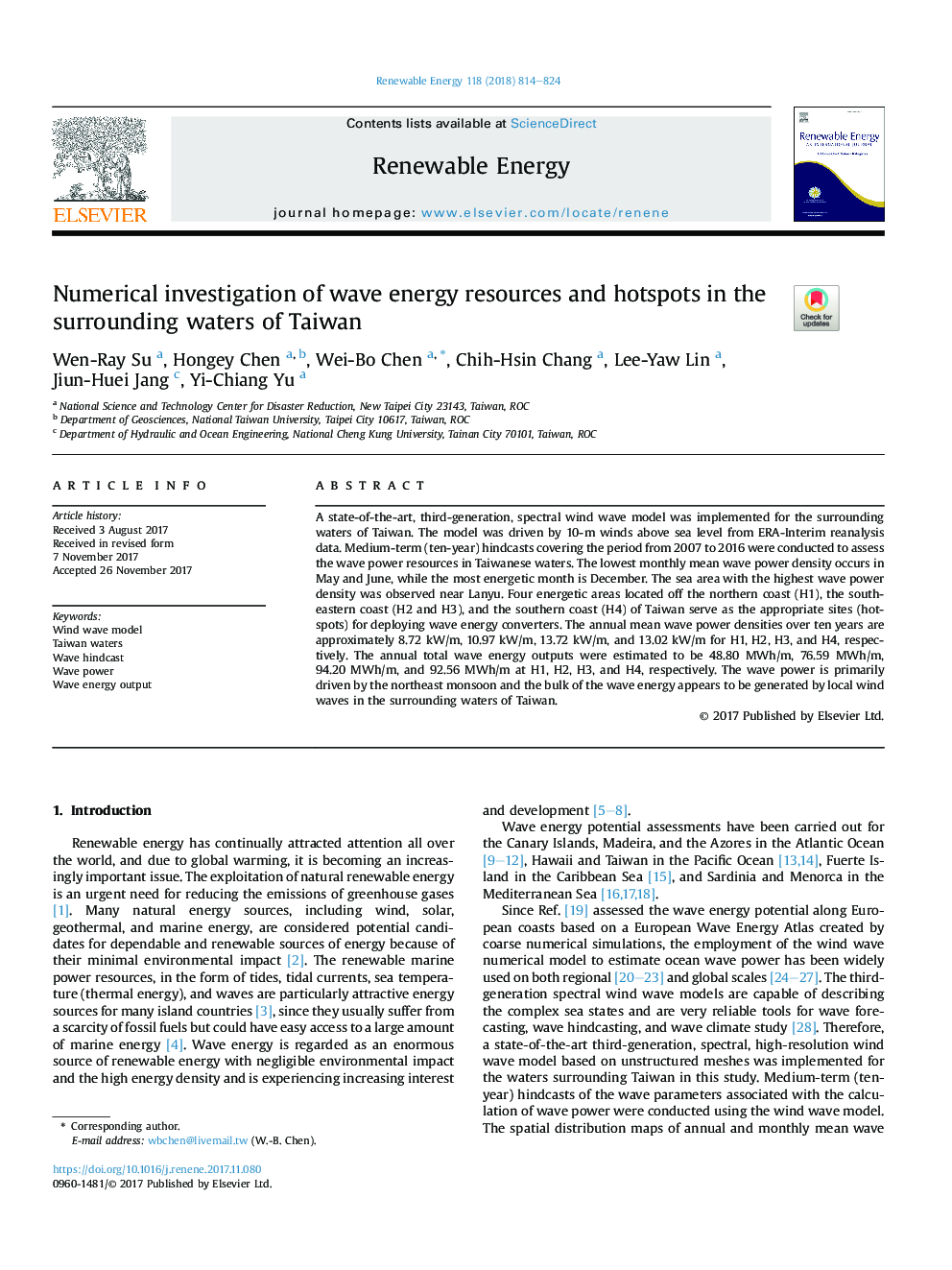| Article ID | Journal | Published Year | Pages | File Type |
|---|---|---|---|---|
| 6765142 | Renewable Energy | 2018 | 11 Pages |
Abstract
A state-of-the-art, third-generation, spectral wind wave model was implemented for the surrounding waters of Taiwan. The model was driven by 10-m winds above sea level from ERA-Interim reanalysis data. Medium-term (ten-year) hindcasts covering the period from 2007 to 2016 were conducted to assess the wave power resources in Taiwanese waters. The lowest monthly mean wave power density occurs in May and June, while the most energetic month is December. The sea area with the highest wave power density was observed near Lanyu. Four energetic areas located off the northern coast (H1), the southeastern coast (H2 and H3), and the southern coast (H4) of Taiwan serve as the appropriate sites (hotspots) for deploying wave energy converters. The annual mean wave power densities over ten years are approximately 8.72Â kW/m, 10.97Â kW/m, 13.72Â kW/m, and 13.02Â kW/m for H1, H2, H3, and H4, respectively. The annual total wave energy outputs were estimated to be 48.80Â MWh/m, 76.59Â MWh/m, 94.20Â MWh/m, and 92.56Â MWh/m at H1, H2, H3, and H4, respectively. The wave power is primarily driven by the northeast monsoon and the bulk of the wave energy appears to be generated by local wind waves in the surrounding waters of Taiwan.
Related Topics
Physical Sciences and Engineering
Energy
Renewable Energy, Sustainability and the Environment
Authors
Wen-Ray Su, Hongey Chen, Wei-Bo Chen, Chih-Hsin Chang, Lee-Yaw Lin, Jiun-Huei Jang, Yi-Chiang Yu,
